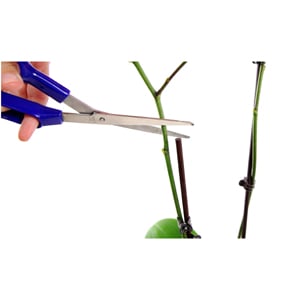
 There comes a time in every orchid’s life that it needs a new home. In a recent post, we discussed a few reasons moth orchids need to be repotted once every one to two years. Here’s a quick refresher: the media in which orchids live breaks down over time, leaving them susceptible to root rot. Say you happen to notice that your orchid’s roots look a little soggy, or you smell a strange odor coming from your Phal’s growing pot. Now would be a great time to begin repotting your orchid.
There comes a time in every orchid’s life that it needs a new home. In a recent post, we discussed a few reasons moth orchids need to be repotted once every one to two years. Here’s a quick refresher: the media in which orchids live breaks down over time, leaving them susceptible to root rot. Say you happen to notice that your orchid’s roots look a little soggy, or you smell a strange odor coming from your Phal’s growing pot. Now would be a great time to begin repotting your orchid.
Although it might sound daunting, the repotting process is actually quite simple. The best time to repot your orchid is after the blooms have fallen, unless, of course, pests are detected. In this post and the next, we’ll review four steps to take when repotting your Phalaenopsis orchid.
Before repotting your orchid, it’s important to give it some good old fashioned grooming. If your orchid’s spikes are still a vibrant green and otherwise appear healthy, trim the spikes approximately one inch above the top node. Just a quick reminder: a “node” is a triangular shaped notch found on the orchid’s stem. If any of the spikes have taken on a shade of yellow or brown, buds will no longer form, so trim that spike approximately one inch above the bottom node.
Your Just Add Ice Orchids come equipped with a clear plastic grower pot that sits inside a larger decorative pot. When it’s time to repot your orchid, remove your orchid from its clear plastic grower pot. Once the roots are out, you’ll need to remove any old potting media that’s still hanging on to your orchid. Now is also the time to inspect your orchid’s roots. If you notice that any of your Phal’s roots are soft and brown, get out a pair of clean scissors and trim ‘em away. These roots aren’t their once healthy selves and should be removed for the overall health of your orchid.
Download “5 Simple Steps to Repotting your Orchid” for more detailed repotting information and tips!

Copyright Just Add Ice® Orchids 2023